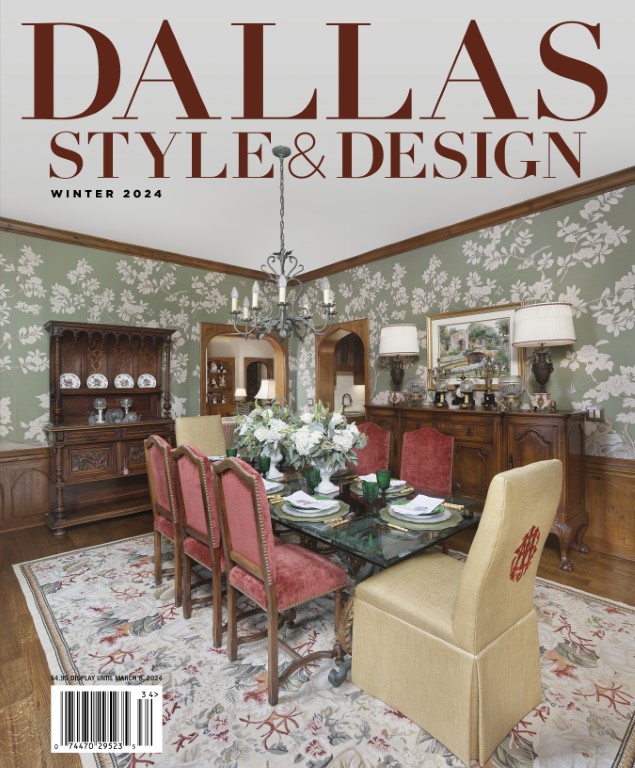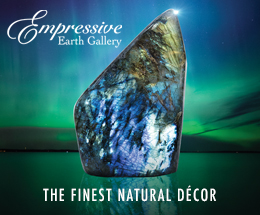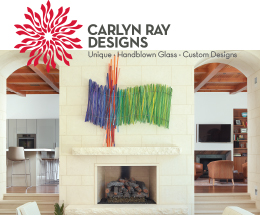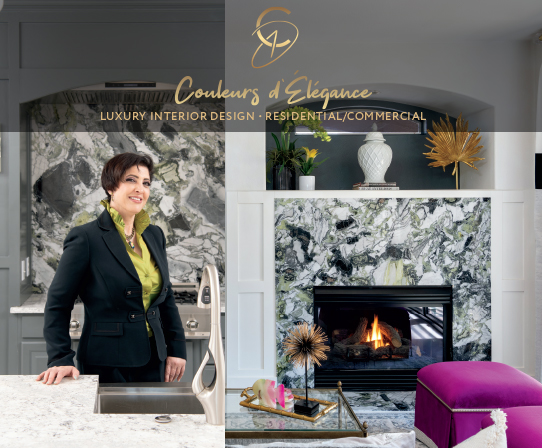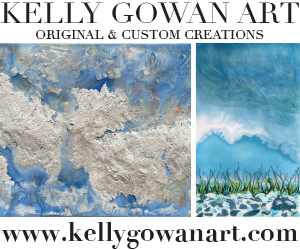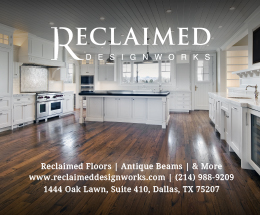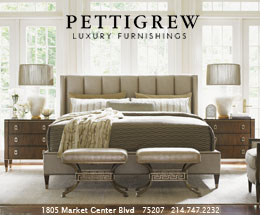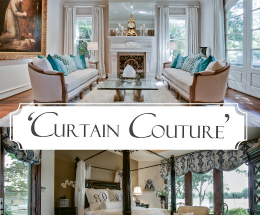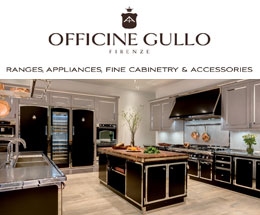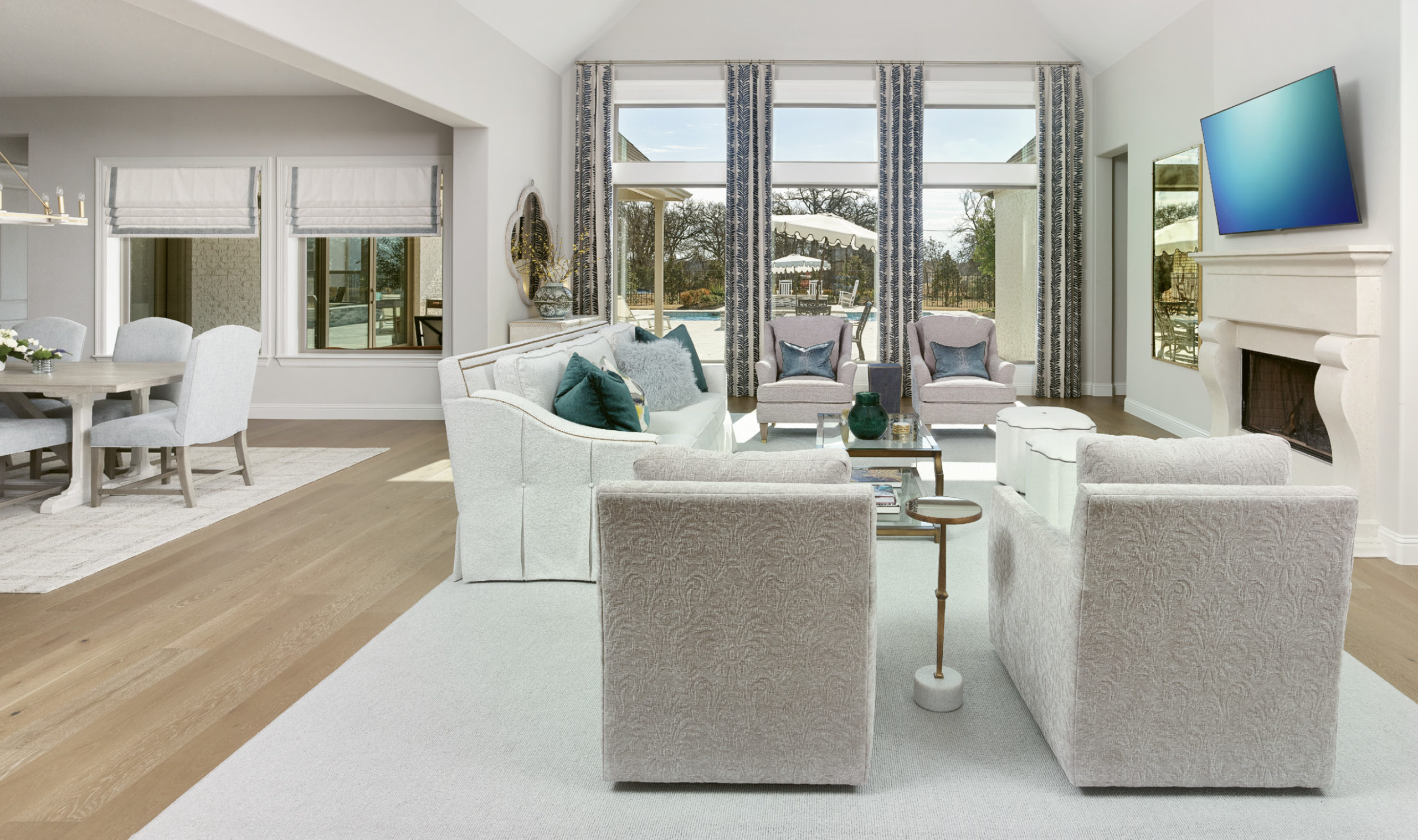
When you’re building or renovating a home with a partner, compromise is the key to ensuring one person doesn’t end up feeling like they live in someone else’s house. While it’s a challenge to combine two styles into a unique third, for interior designers, the magic is in creating a new style that can stand on its own and stand the test of time. In other words, the blend can’t just be a mishmash of ideas; it has to make sense. For interior designer Stephanie Kratz, inventing new design styles is her expertise. “I love to get people out of their comfort zones,” she says. “I’ve got a big bag of tricks and a head full of ideas, so I’m able to create something they didn’t know existed.”
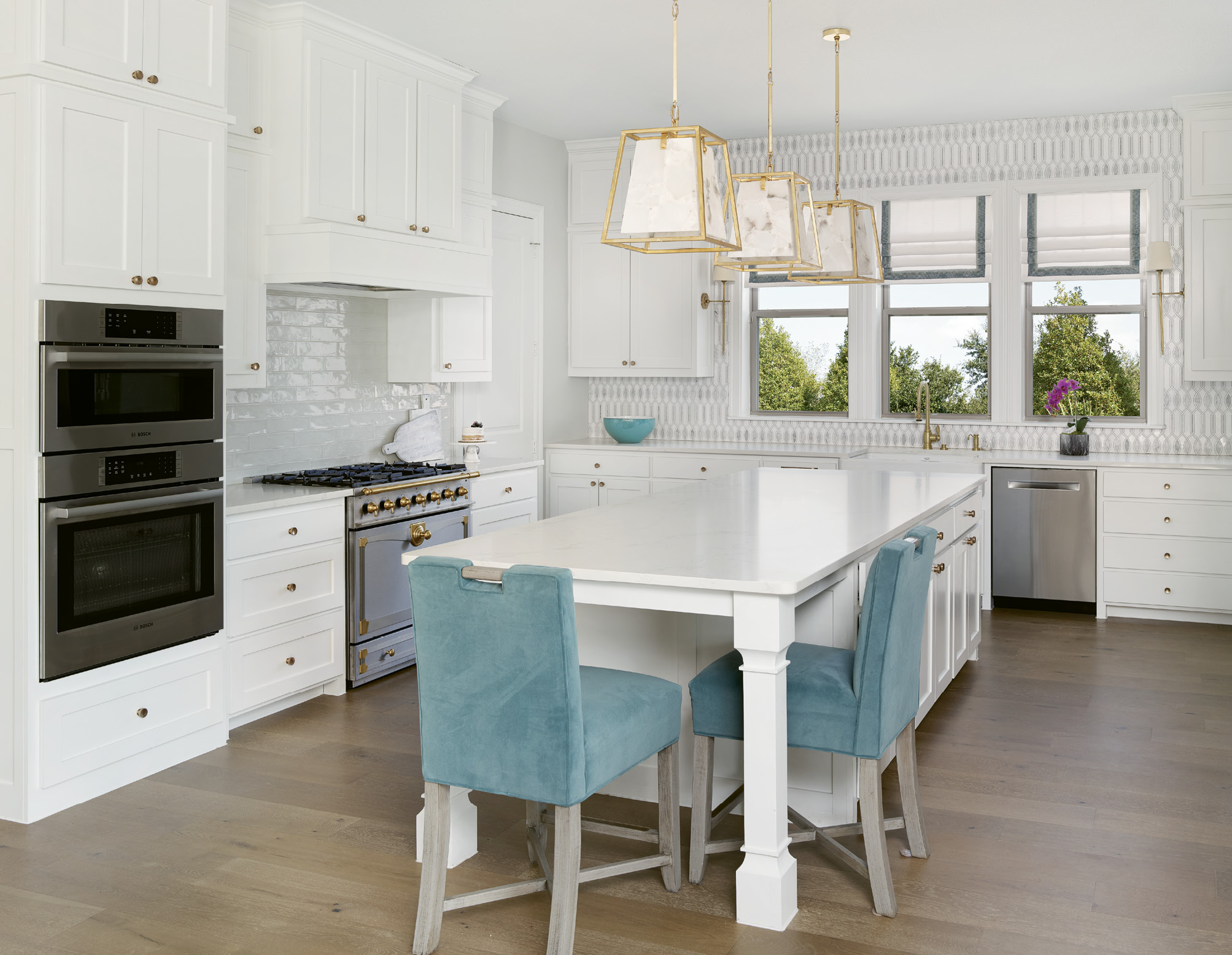
Kratz recently got to flex her creative muscles in a new construction ranch-style home in a fly-in community in Shady Shores, Texas. Her clients had very different aesthetic preferences and were coming from a house that was more to her taste than his, and they were ready for a change. While she prefers contemporary French Country with all of the warm and cozy details of the traditional style, he wanted a modern vibe with calm visual energy, clean lines and muted colors. He didn’t want ornate, but she didn’t want sterile. Ever innovative, instead of looking only at the design fundamentals of either style, Kratz also looked to French artistry for inspiration. The result is a home that gives the impression of both styles without literal interpretations of either.
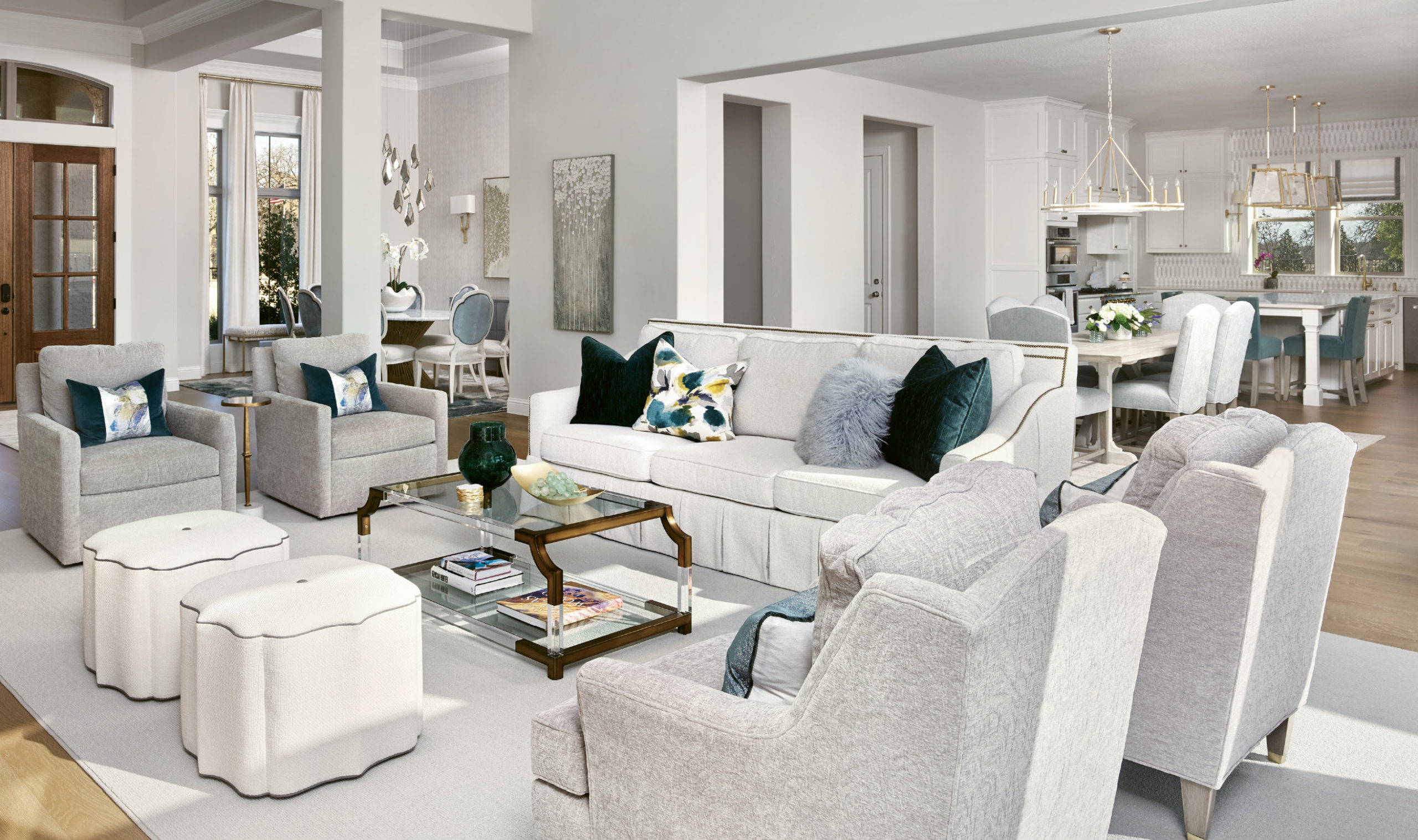
In the entry, a gold sculptural light fixture with selenite crystals mimics tree branches and hints at the understated splendor to come. On the ceiling, Kratz used a shimmering wallcovering to reflect the light’s iridescent glow. To the left is the dining room, where a gold Pick Up Sticks table from Ambella Home anchors the room and steals the show. The hand-knotted rug featuring delicate waves of soothing blues, greens and turquoise sets the stage for the space and the entire home. The tray ceiling also has a wallcovering in the center but in a different pattern than the rear accent wall.
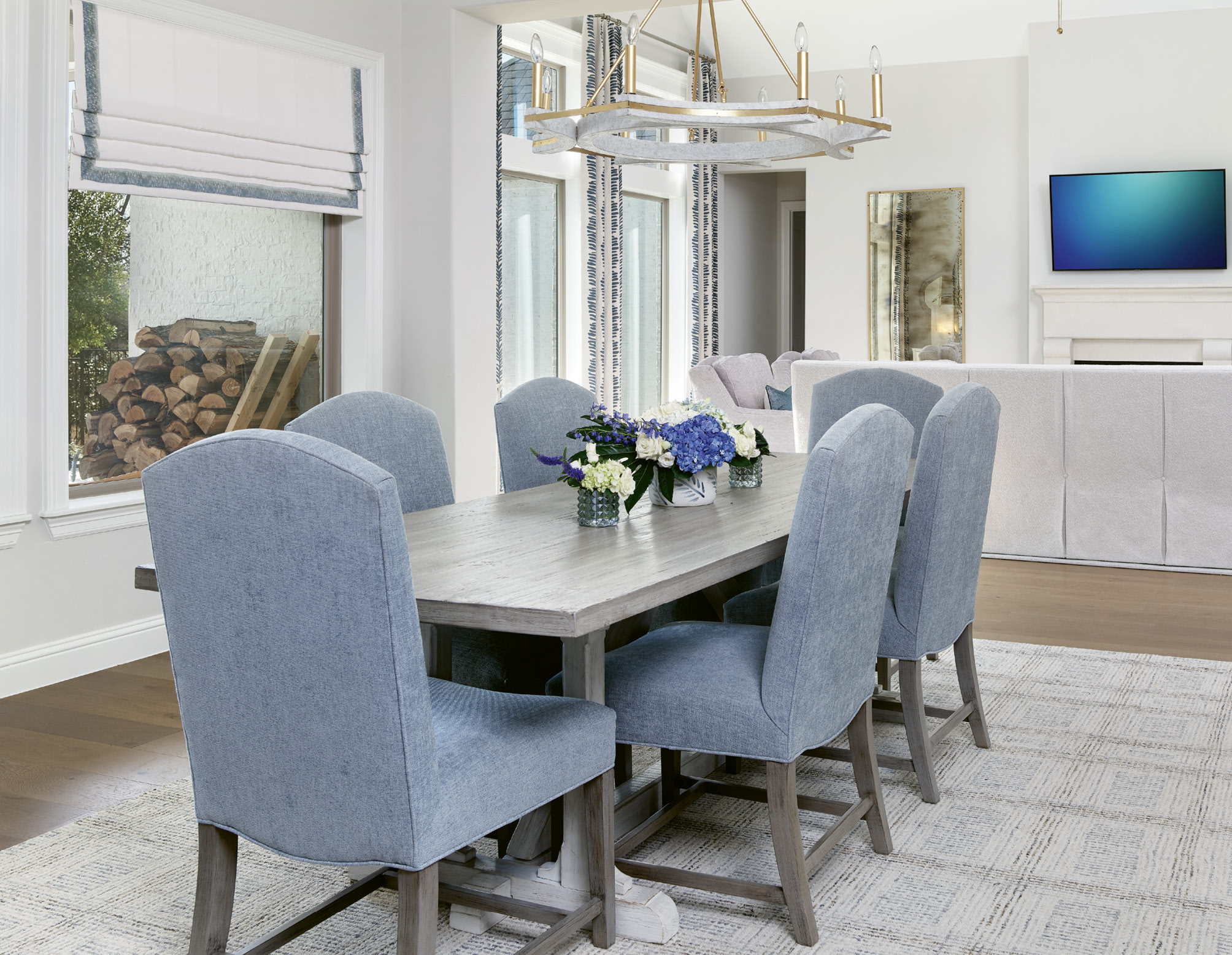
The open kitchen and great room are the heart of the home. Kratz used two swivel chairs so the grouping can easily transition from entertaining by the cast stone fireplace to a place to hang out for movie night. In traditional French Country design, window treatments are all about plaid, stripes, checks or toile. However, the designer didn’t want to overwhelm the house with patterns, so she kept window coverings simple and soft throughout the home.
In the elegant kitchen, the breakfast table has a rustic patina that is a distinct nod to traditional French Country style. The designer used a luxurious stone mosaic made from Carrara marble and mother-of-pearl on the back wall. A gold Waterstone faucet picks up the gold from the exquisite, handcrafted French La Cornue range, echoing the gold accents throughout the home. A cozy overhang on the expansive island is the perfect spot for breakfast or coffee or enjoying a cocktail while keeping the cook company.
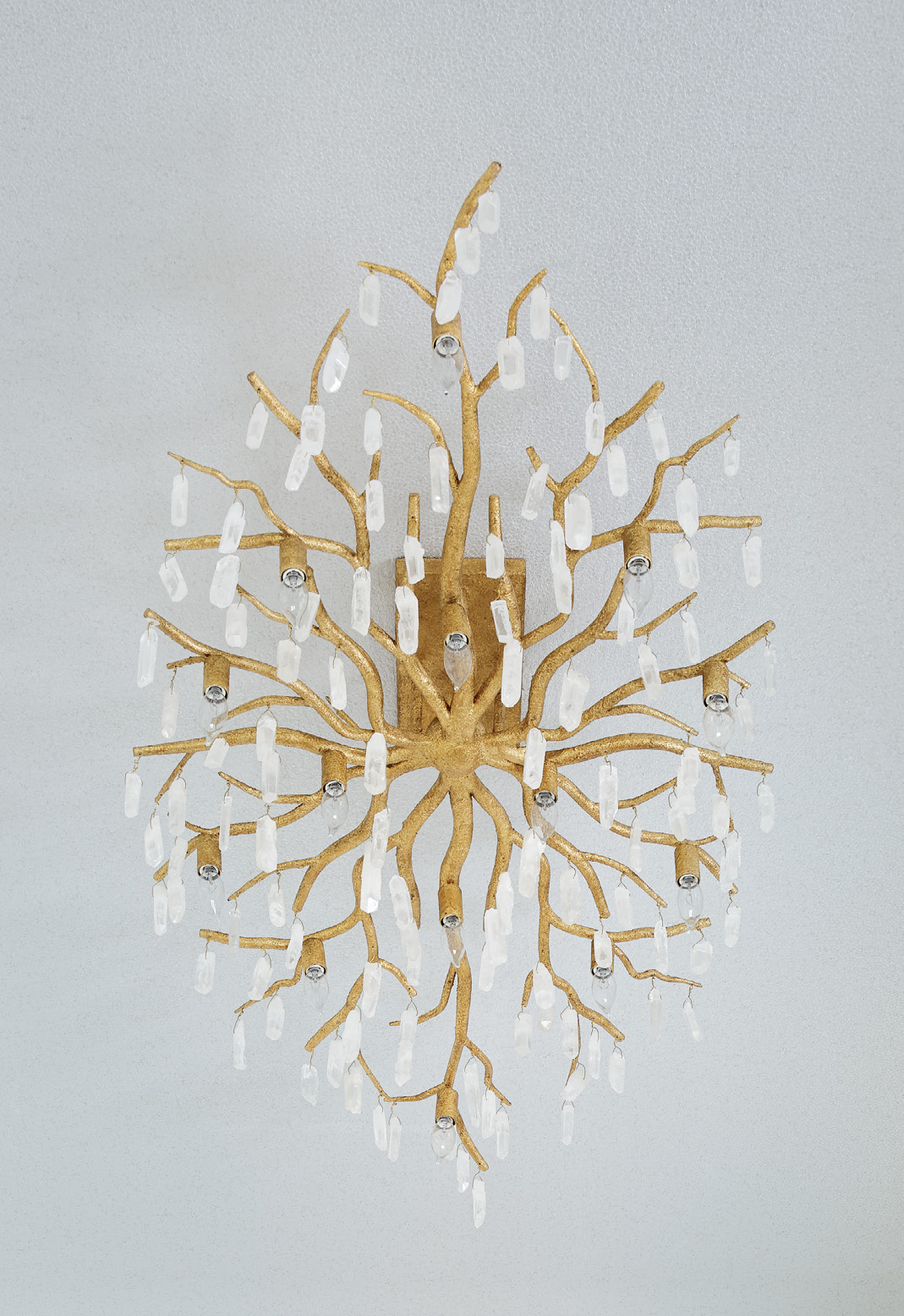
In the powder room, Kratz used a statement wallcovering in black and white. “It’s a strong pattern, but it played on the French feel in a modern way,” she says. Gold hardware accents, including a gold-framed mirror, contrast smartly with the white vanity and marble top.
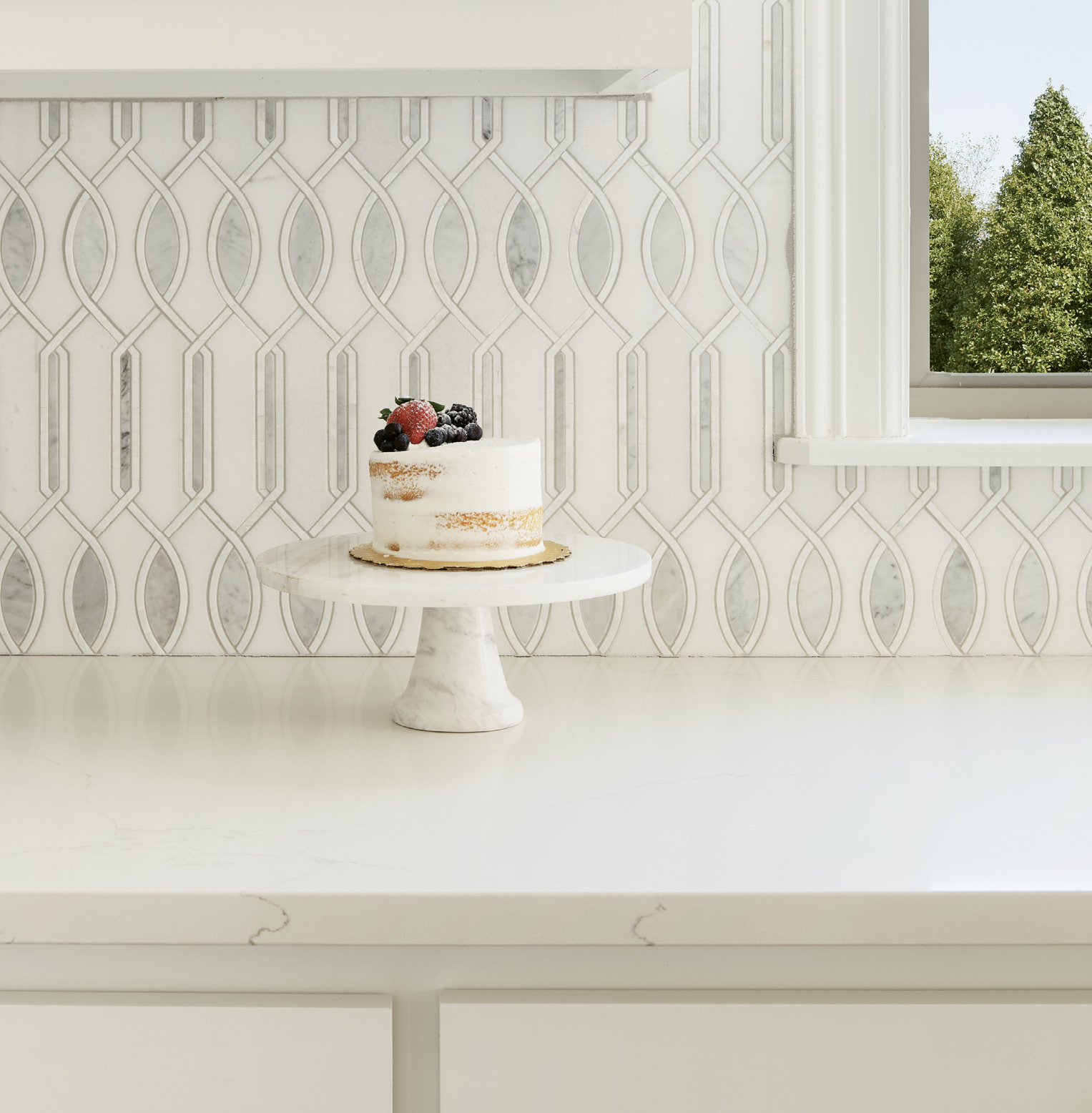
Kratz saw the primary bedroom as an area to emphasize colors used as accents throughout the rest of the home. “Here, we went bolder with an amazing wallcovering, mixed metals, whites, greens and blacks. It sets the room apart from the rest of the house,” she says. The room features a modern fireplace facade with large-format tiles that look like stone. Overhead, a John-Richard “fandelier” offers the sparkle of a chandelier with the functionality of a hidden fan. A refined wallcovering by Thibaut provides the perfect backdrop for a sophisticated Vanguard bed with custom bedding, including a peacock lumbar pillow in Persian garden velvet. Underfoot, a soft Kane rug anchors the space.
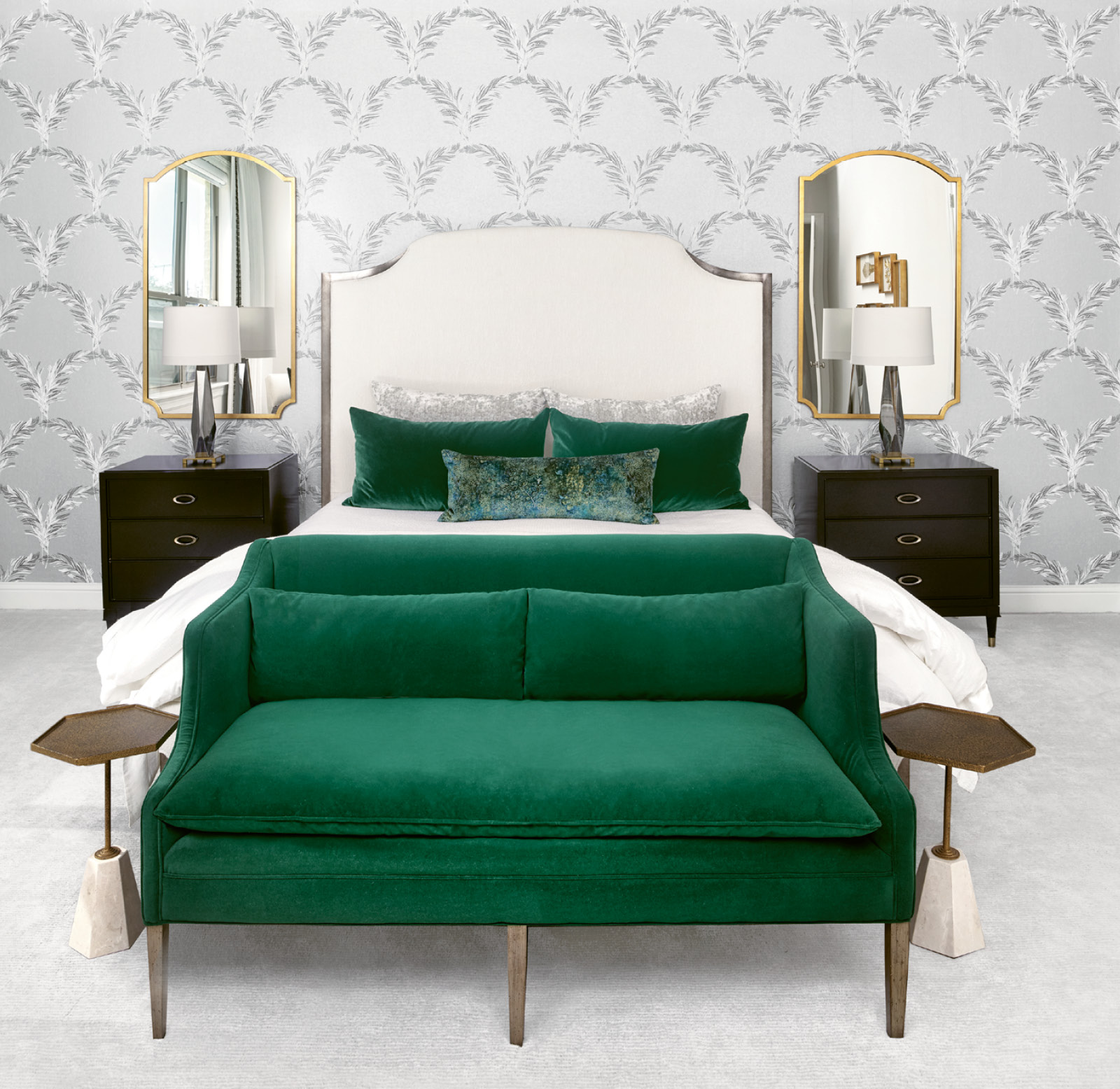
The homeowners were more than pleased with the results and the process. One of the things that sets Kratz apart as a designer is her 11,000-square-foot design studio. Instead of driving clients all over town from one specialty store to another to choose fixtures and furnishings, she’s able to offer one-stop browsing. “For example, we have over 20 different upholstery lines. We’re set up directly with the best manufacturers, so I have everything at my fingertips. Having a design studio helps us target our clients’ investments,” she says. “It’s a very efficient process, and nobody has to run all over town. Plus, there’s nothing worse than having too many options. My job is to home in on what my clients want then present options.”
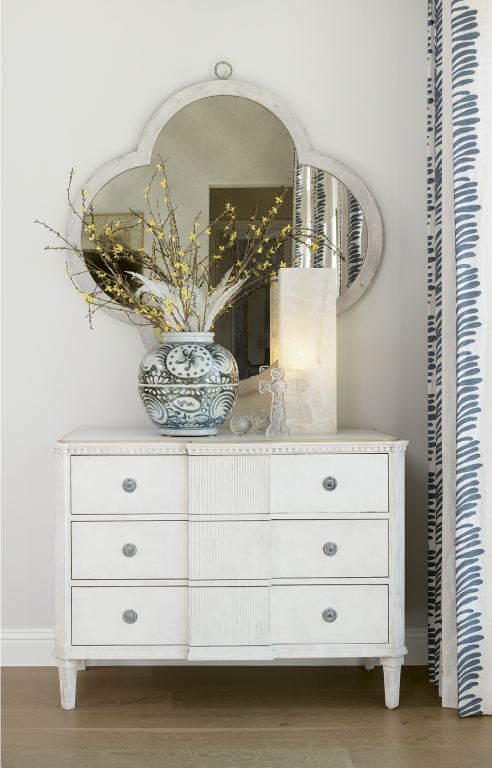
Kratz says many clients come to her with a limited view of what’s possible. Having only been exposed to their friends’ houses, magazines or home décor websites, they’re delighted to hear a novel idea that takes their vision to a whole new level. In that vein, the designer is very protective of her clients. “I would never create the same house twice,” she says.
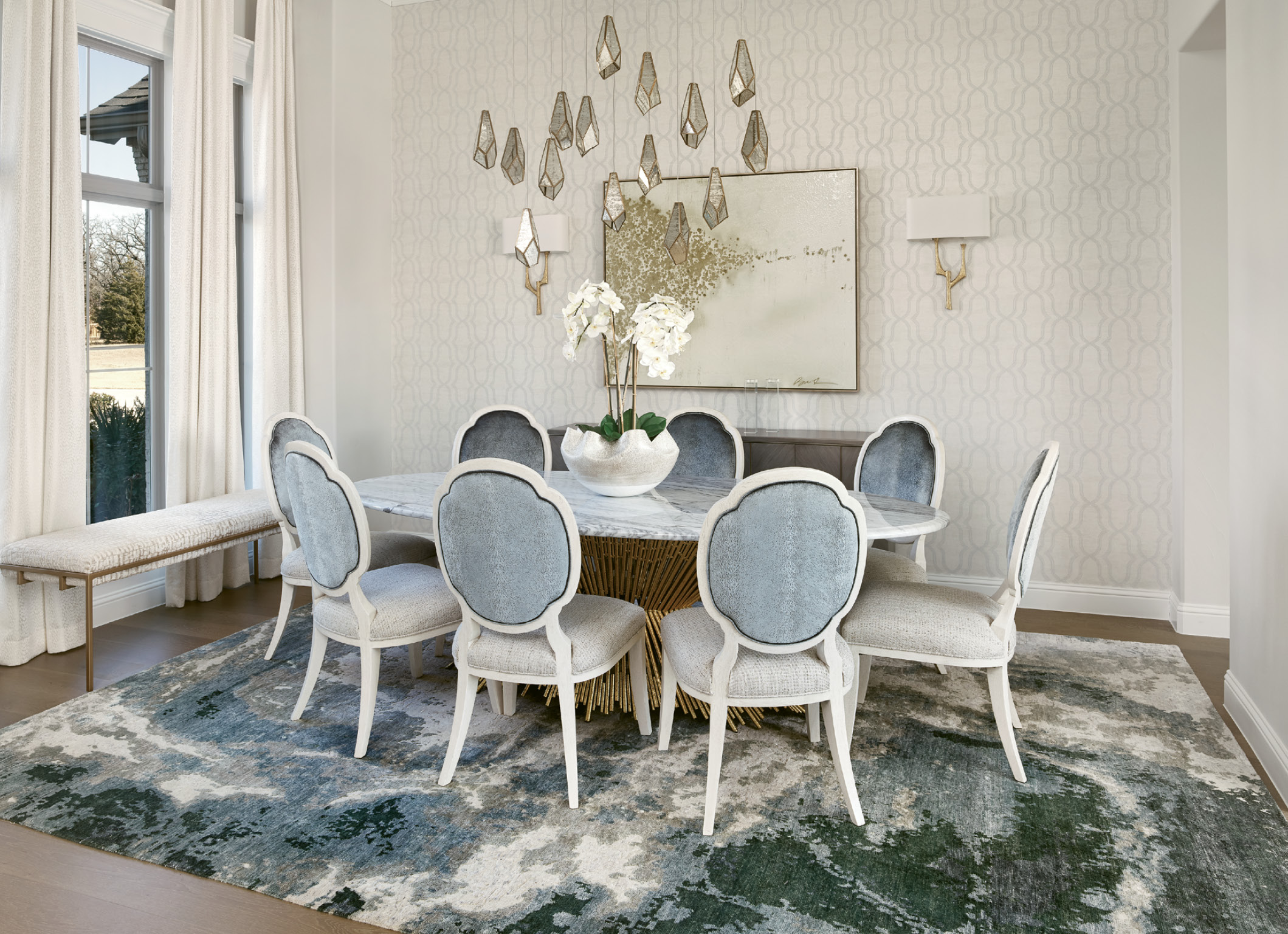
As for how the firm is handling increased demand and supply chain challenges, Kratz shrugs it off. “Our goal is to take the stress and worry from our clients. We’re thrown curveballs every day, and it’s our job to manage curveballs. We’re used to it. What matters to us is that our clients have a positive experience.”
Robin Howard is a full-time freelance writer in Charleston. See more of her work at robinhowardwrites.com.

